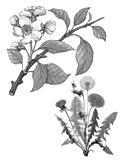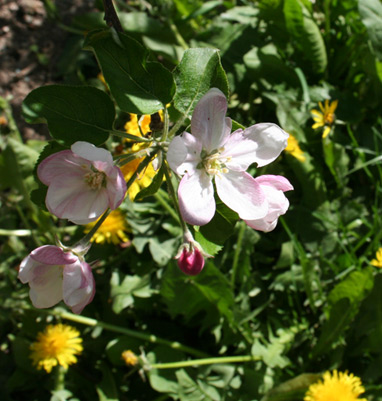
dandelion and apple blossom
Taraxacum officinale, Malus domestica
Produced at the start of spring when dandelion and apple trees in the nearby Val di Non bloom at the same time.
Colour yellow amber
Crystallisation very quick with medium to fine granularity
Aroma very intense, penetrant, typical of dandelion
Taste similar to the aroma; persistent and of medium sweetness; intensive aroma and fresh with a scent of camomile, with a slightly bitter and acidic taste due to the apple flower
Use table honey for those who appreciate the taste
Natural characteristics of the plant dandelion has diuretic characteristics; also used for headaches and high cholesterol levels
Available amounts 40g - 250g - 400g - 1000g
|
 |



